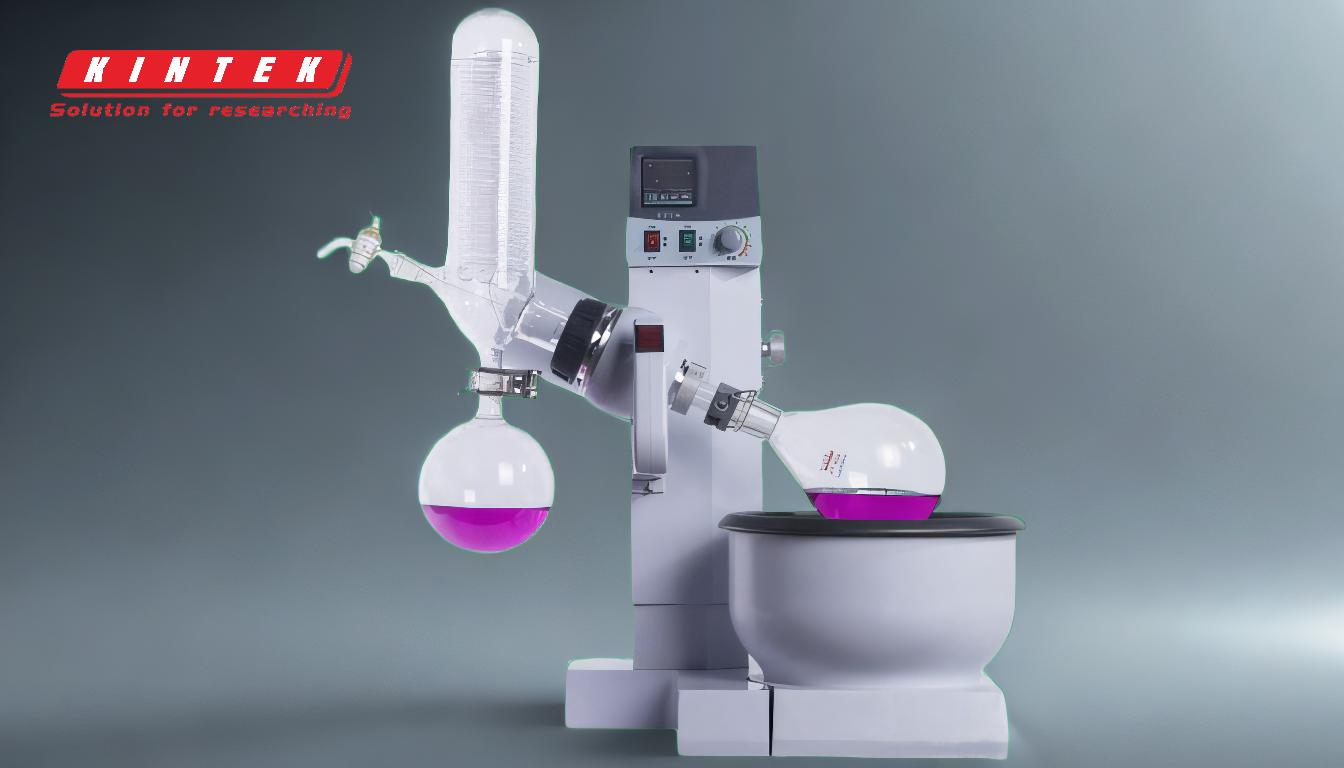A condenser is an essential component of a rotary evaporator, primarily used to cool and condense solvent vapors back into liquid form. This process is crucial for separating solvents from mixtures, enabling the recovery of solvents for reuse or further analysis. The condenser achieves this by circulating a cooling liquid, such as water or antifreeze, through a coil or using a coolant mixture like acetone or dry ice. The condensed liquid is then collected in a flask, ensuring efficient solvent recovery and preventing loss of valuable materials.
Key Points Explained:

-
Purpose of the Condenser:
- The primary function of the condenser is to cool and condense vaporized solvents back into liquid form. This is critical for separating solvents from mixtures during the evaporation process.
- By converting vapors into liquid, the condenser ensures that solvents can be collected and reused or analyzed further, enhancing the efficiency and sustainability of the process.
-
Cooling Mechanism:
- The condenser contains a coil or a "cold finger" through which a cooling liquid (e.g., water, antifreeze) or a coolant mixture (e.g., acetone with dry ice) circulates.
- The coolant absorbs heat from the vaporized solvent, causing it to condense back into liquid form. This heat exchange is fundamental to the condensation process.
-
Types of Condensers:
- Coil Condensers: These consist of a coiled tube through which coolant flows. The large surface area of the coil maximizes heat exchange, ensuring efficient condensation.
- Cold Finger Condensers: These are typically used with low-temperature coolants, such as dry ice or liquid nitrogen. They are highly effective for condensing solvents with low boiling points.
-
Role in Solvent Recovery:
- The condenser ensures that solvent vapors are not lost to the environment. Instead, they are condensed and collected in a dedicated flask.
- This recovery process is essential for reducing waste, lowering costs, and maintaining safety by minimizing exposure to volatile solvents.
-
Integration with Rotary Evaporator:
- The condenser is positioned between the evaporation flask (where the sample is heated) and the collection flask. This placement ensures that vapors travel directly from the heated sample to the condenser, where they are cooled and collected.
- The design of the condenser, often a long glass tube, maximizes contact between the vapor and the cooling surface, enhancing condensation efficiency.
-
Applications and Benefits:
- The condenser is indispensable in applications such as chemical synthesis, pharmaceutical research, and food and beverage production, where solvent separation and recovery are critical.
- Benefits include improved process efficiency, reduced solvent consumption, and enhanced safety by preventing the release of harmful vapors.
By understanding the role and mechanics of the condenser, users can appreciate its importance in the rotary evaporation process and make informed decisions when selecting or maintaining equipment.
Summary Table:
| Aspect | Details |
|---|---|
| Purpose | Cools and condenses solvent vapors back into liquid form for recovery. |
| Cooling Mechanism | Uses water, antifreeze, or low-temperature coolants like dry ice. |
| Types | Coil condensers (maximize heat exchange) and cold finger condensers (low-temp). |
| Role in Solvent Recovery | Prevents solvent loss, reduces waste, and enhances safety. |
| Integration | Positioned between evaporation and collection flasks for efficient cooling. |
| Applications | Chemical synthesis, pharmaceutical research, and food/beverage production. |
Optimize your rotary evaporator setup with the right condenser—contact our experts today for guidance!










